Last-Minute NYC Holiday Gift Guide 🎁
We’ve created a holiday gift guide with presents for the intrepid New Yorker that should arrive just in time—


Yesterday, we got a unique chance to see the dry docks at the Brooklyn Navy Yard from a unique angle: via the water. Most ferry boats and pleasure cruises rarely turn into the Navy Yard Basin (also known as Wallabout Bay), sticking to the most efficient path on the East River. But we were being taken to see the working waterfront in New York City aboard the historic Fireboat John J. Harvey, as part of the project to rehabilitate the S.S. Columbia, a passenger steamship from Detroit that will be making its way down the Hudson River to New York City next year.
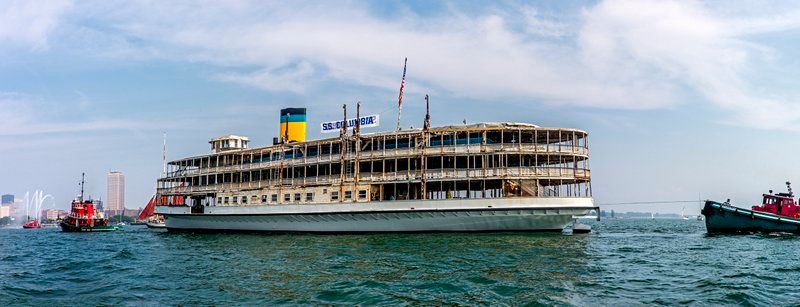
The S.S. Columbia in Buffalo in 2015. Photo via S.S. Columbia Project.
The S.S. Columbia is the last ship of its kind that still exists and is made by the same company that built the steamboats that once plied the Hudson River. Over the last two years, the S.S. Columbia moved from Detroit to Toledo, across Lake Erie to Buffalo, where it will be until it makes a 2,017 mile trip through Lake Ontario, up the St. Lawrence River and south down the Atlantic Ocean. It will make a triumphant stop in New York City for events before heading up the Hudson River to Kingston, New York.
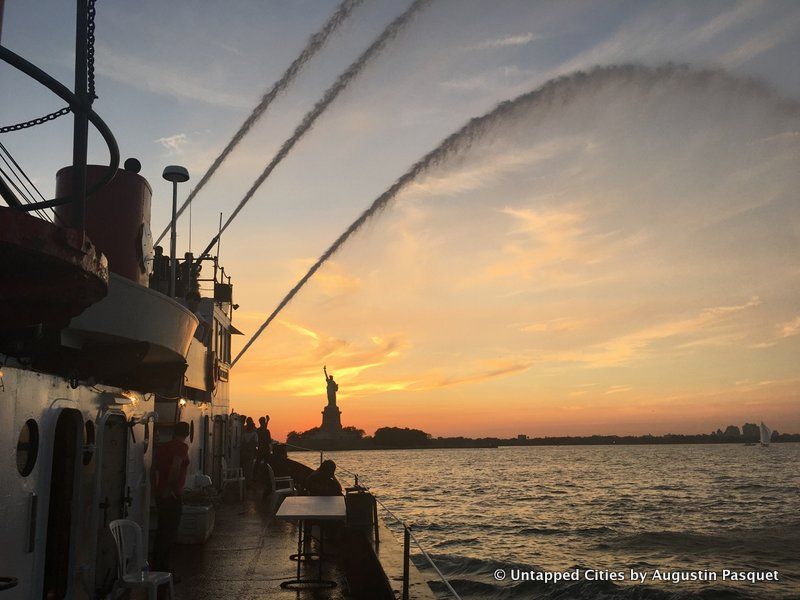
Aboard the Fireboat John J. Harvey
The Fireboat John J. Harvey is the historic 1931 boat that docks at Pier 66 Maritime in Hudson River Park, sharing the same pier as the famous floating bar, the Frying Pan. S.S Columbia board member Huntley Gill is one of the trustees of the Fireboat John J. Harvey, and took us for a ride up the Hudson to see potential docking sites for the S.S. Columbia when it arrives in New York City, down by the Statue of Liberty (where the John J. Harvey put on a show of its water pumping capacity (at 18,000 gallons per minute), and up the East River to the Brooklyn Navy Yard and north.
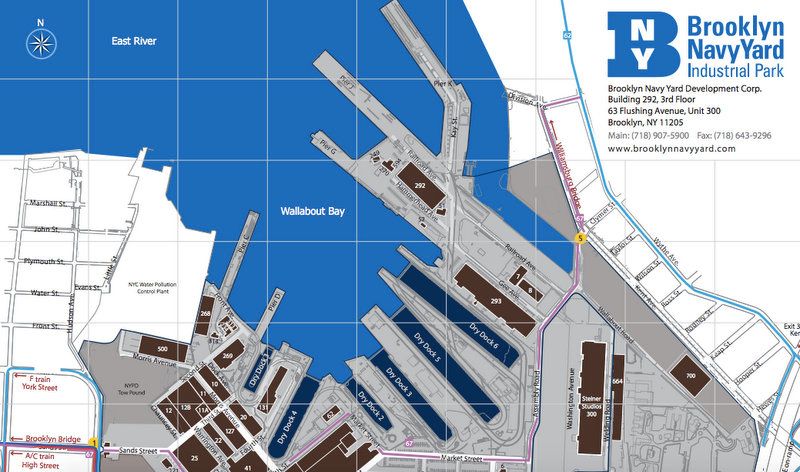
Map of the Brooklyn Navy Yards showing Dry Docks 1 through 6
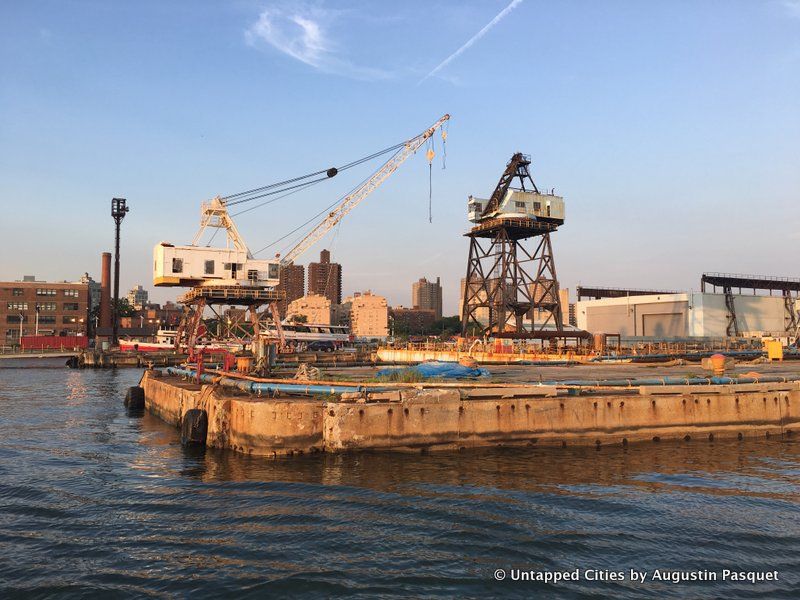
Approaching Dry Dock #6
There are six dry docks in the Brooklyn Navy Yard that allow for maintenance works on ships. The ships enter these rectangular basins when the water level is full. There’s a large door on the front that can be closed after a ship enters and pumps remove the water, making the sunken dock dry.
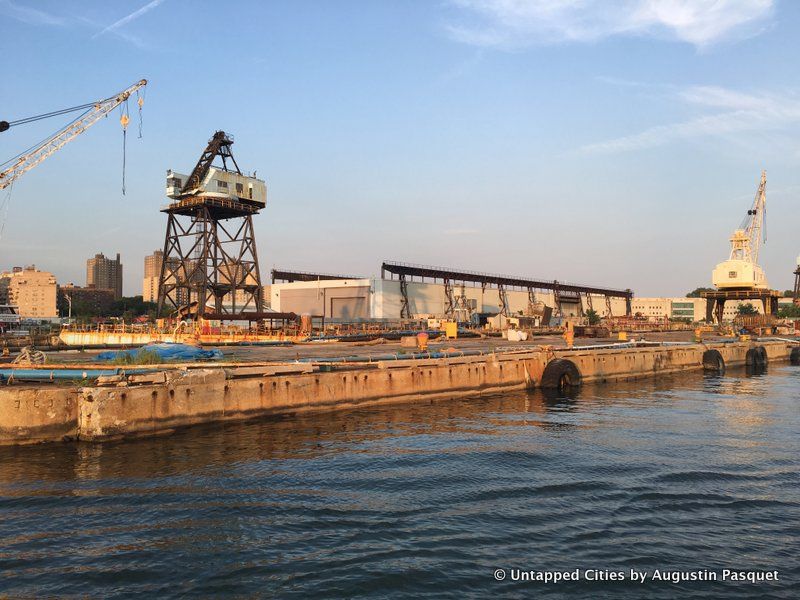
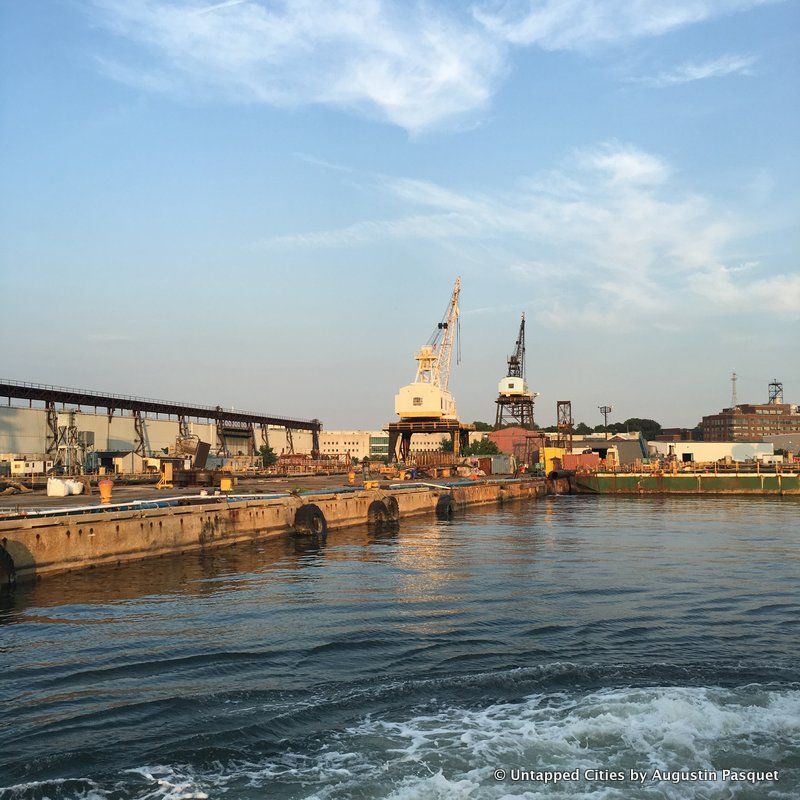
Approaching Dry Dock #6
The most famous may be Dry Dock #1, the first that was completed here in 1851, next to where the new WeWork Building will be built. It’s often featured in movie shoots for television shows like Gotham and Jessica Jones. Dry docks #5 and #6 were the last to be built and used a new construction method called tremie that significantly reduced the time for construction.
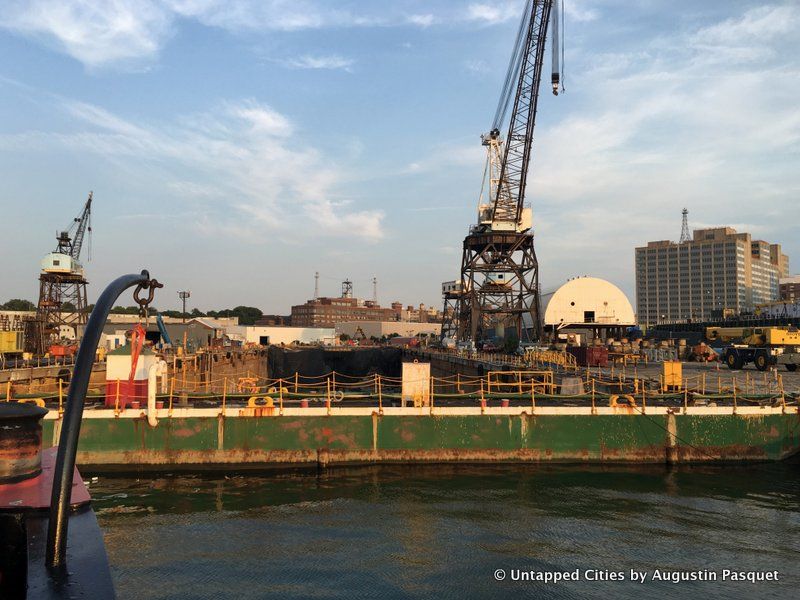
Andrew Gustafson of Turnstile Tours explains on the company’s blog:
This innovation didn’t require the site to be pumped out and excavated before the concrete was poured. Instead, the area was dredged to the desired depth, and more than 12,000 piles were driven in the water to support the dock structure – for dry docks 5 and 6, these supports were driven down 70 feet into the riverbed to reach bedrock. Next, gravel was laid and graded underwater to form a bed for the dock, and a special mix of concrete was poured into submerged forms through a so-called tremie pipe.
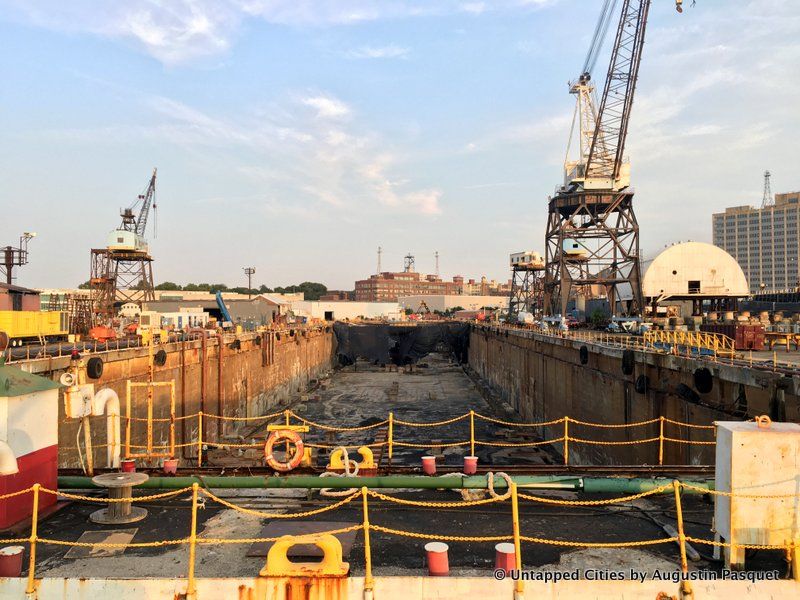
Whereas dry dock #1 took 20 years to build, dry docks #5 and #6 could actually be used to fix ships even before they were fully completed. These two docks were finished in 1942, in the middle of World War II. They measure 1,092 feet in length and 150 feet in width, which Gustafson says is big enough to fit the Chrysler Building on its side.
There’s also a great connection between the Brooklyn Navy Yard dry docks and the Fireboat John J. Harvey, which was first spotted there in 1997 by the group that rehabilitated the boat. They purchased the boat in 1999.
Next, check out our last trip aboard the Fireboat John J. Harvey to photograph the arrival of the Queen Mary 2 and learn more about the S.S. Columbia.
Subscribe to our newsletter